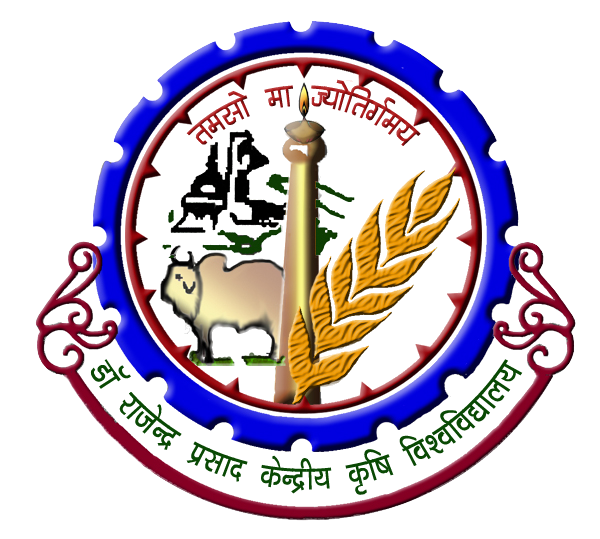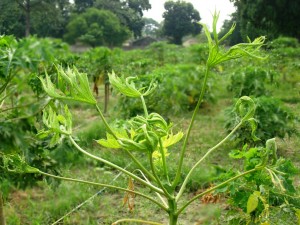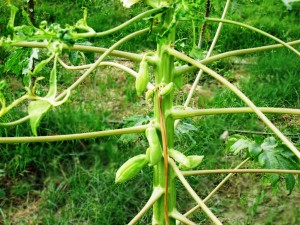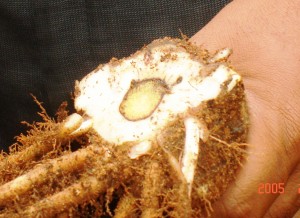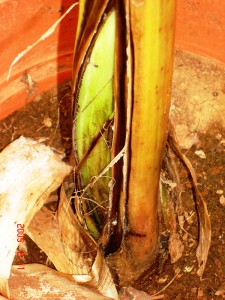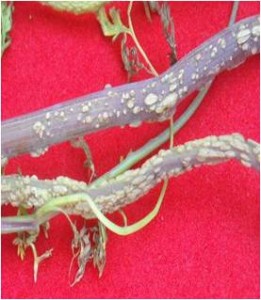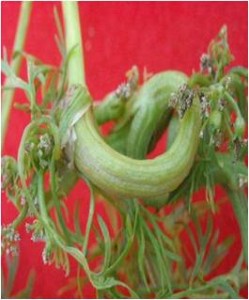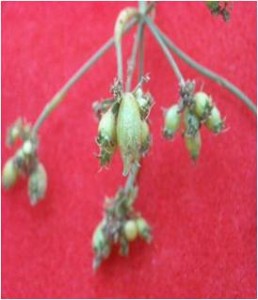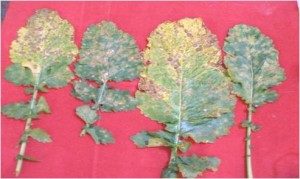About the Department
The Department of Soil Science owes its origin to Imperial Agricultural Research Institute established at Pusa, Bihar in 1905. Workers like Dr. J. W. Leather “considered father of Indian Soil Science & Agricultural Chemistry” sowed the seed for the research in the field of soil science at Pusa. After the establishment of Rajendra Agricultural University in 1970, the post graduate studies in Soil Science started with a full fledged laboratory and staff. Stalwarts like Prof. S. C. Mandal, Dr. K. K. Jha, Dr. P. P. Jha, Dr. M.K. Sinha, Dr. R. Sakal and others gave the present shape to the Department. Further the state university i. e Rajendra Agricultural University has been upgraded in to CAU, Dr. Rajendra Prasad Central Agricultural University and departmental research, teaching and extension activities gained momentum to fulfill the need of farmers, students and researchers.
The department has carved a niche for itself through focused research in different spheres of soil science as well as by producing quality human resource through excellent postgraduate with updated and modern courses curricula. The great diversity in the areas of expertise and interests present in the Department leads to diversity in thesis research. Till date about 202 M.Sc. and 57 Ph.D. students have earned degrees and more than 1200 research publications have been made.
Over the years, the trained and accomplished faculty members as well as students in addressing current issues in Soil Science have won several national and international awards. Individual staff members within the department have long been recognized for their leadership role in the Soil Science. To cater the needs of farmers, the soil testing lab is issuing Soil Health Card with crop based nutrient recommendation.
Vision
To promote quality teaching in different field of soil science and strengthen the soil science research through multidisciplinary research for efficient utilization of resources for betterment of agriculture.
Mandate
- To impart education in different branches of soil science and allied fields
- Basic, strategic, and applied research on physical, chemical and biological processes in soils for developing technologies to enhance productivity and quality of soil and agricultural produce.
- To collaborate with relevant national and international agencies for all round development of agriculture in the state.
Objectives/Goals
- To provide scientific basis for enhancing and sustaining productivity of soil resources with minimal environmental degradation.
- To conduct basic research on soil processes for enhancing nutrient use efficiency and soil health sustenance
- To promote bio-waste management technology for improving productivity, soil bio-diversity and carbon storage
- To encourage organic farming under climate smart agriculture for sustaining productivity and ecosystem functioning
- To characterize the key soil biota for improving N, P, K, S and Zn use efficiency in Inceptisols and Alfi sols
- To study conservation agriculture and low carbon footprint to keep soil alive
The Department is actively engaged in the research work on both fundamental and applied aspects. Several projects funded by national/ international agencies have been completed successfully. Following are the projects which are under operation in the department:
- AICRP on ‘Soil Test Crop Response Correlation (STCR)’
- AICRP on ‘Micro and Secondary Nutrients and Pollutant Elements in Soils and Plants’
- Project on ‘Organic Waste Management’ and ‘Vermicompost Production’
- Soil Intelligence System (SIS) project in collaboration with CIMMYT
- ‘Soil Health Assessment of Bihar’ in collaboration with Cornell University (USA) and CIMMYT Maxico
- International Plant Nutritional Institute, South Asia Programme funded project on ‘Assessing the contribution of nutrients to yield of hybrid rice and maize through omission plot technique in Bihar’
- IRRI funded project on ‘Crop Manager’ under low land rainfed conditions
Degrees Offered
| S. No. | Degree Offered | Subject/ Discipline | No. of Seats | Eligibility Qualifications |
| i | M. Sc. (Ag) | Soil Science | 13+01* | B.Sc. or B.Sc. (Hons.) Agriculture/Horticulture |
| ii. | Ph.D. | Soil Science | 04+03* | M.Sc. (Ag.) Soil Science / M. Sc. (Ag.) Soil Science & Agril. Chemistry |
Facilities and Infrastructure
Adequate infra-structure are available like:
Number of Smart Class rooms: 2
Number of lecture Hall : 1
Number of adequately Equipped PG/Research Laboratories : 8
- Spectroscopy Laboratory equipped with: Spectroscopy, Deep Freezer, Rotary Shaker, Autoclave, B.O.D., and Bacteriological Incubator.
- Soil Physics Lab. equipped with Pressure Plate ,Guelph Permeameter, Yodler’sapperatus, Atomic Absorption Spectrophotometer Hot Air Oven, pH meter, Porometer, Soil Moisture meter
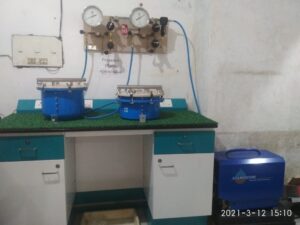 | 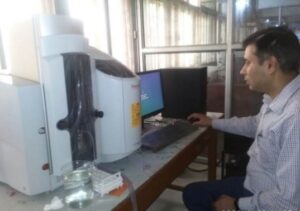 |
- Soil Test Crop Response (STCR) Lab. equipped with:-Atomic Absorption Spectrophotometer, Semi Automatic Nitrogen Analyzer, Scanning Visible Spectrophotometer, Flame Photometer, pH meter, Conductivity meter, Water Purification System, Environmental Shaker, Rotary Shaker, Horizontal Shaker etc.
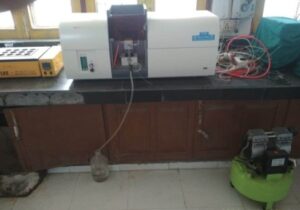 |  | 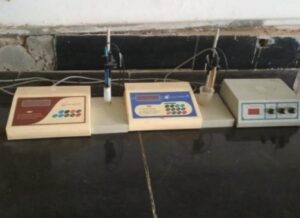 |
- Soil Health Lab. equipped with Atomic Absorption Spectrophotometer with Graphite furnace/ Hydride generator/ CHN analyzer/ High Speed Centrifuge / protein analyser/ aggregate analyzer, pH meter etc
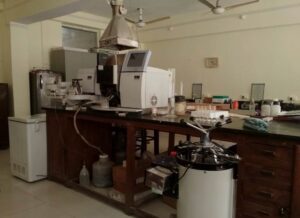 | 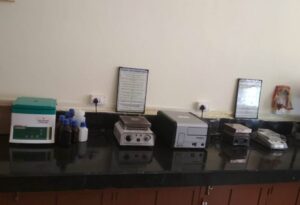 |
- Micronutrient Lab. equipped with pH meter/ PC based UV visible Double Beam Spectrophotometer/ Flame Photometer/ Millipore Water Purification System etc.
- PG Lab I equipped with Scanning Visible Spectrophotometer, Flame Photometer, pH meter, Conductivity meter etc
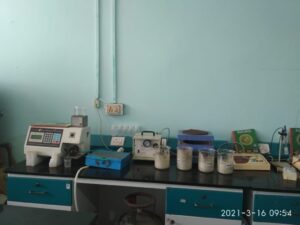 | 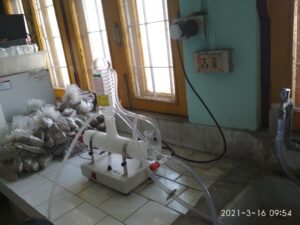 |
- PG Lab II equipped with Atomic Absorption Spectrophotometer, Semi Automatic Nitrogen Analyzer, Scanning Visible Spectrophotometer, Flame Photometer, pH meter, Conductivity meter, Rotary Shaker, Horizontal Shaker etc
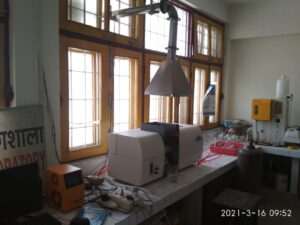 | 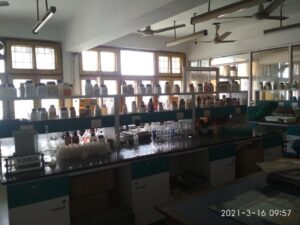 |
- Referral Soil Testing Laboratory equipped with Atomic Absorption Spectrophotometer, Semi Automatic Nitrogen Analyzer, Scanning Visible Spectrophotometer, Flame Photometer, pH meter, Conductivity meter, Water Purification System, Environmental Shaker, Rotary Shaker, Horizontal Shaker etc
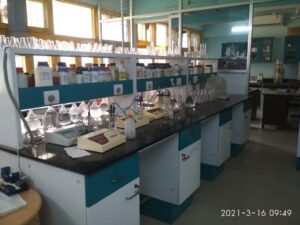 | 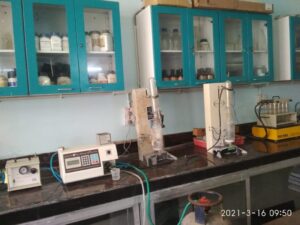 |
Achievements
1.Significant contributions:
- Referral Soil testing lab: of Bihar has identified Soil Testing Laboratory of the department as a referral laboratory for rechecking the analysis report of Government laboratories.
- Targetted yield equations: Fertilizer adjustment equations for major crops for different agro climatic zones of Bihar (with and without IPNS) and Jharkhand (without IPNS) states have been developed. Equations have also been developed for important vegetables, spices and medicinal plants grown especially in North Bihar area. Equations for major cropping system of the area (North Bihar) has been developed in which a farmer will get fertilizer recommendation for whole cropping system by sending their soil sample either in Kharif or Rabi.
- Fertility maps: GPS and GIS based Soil fertility mapping with regards to major, secondary and micronutrients of districts of Bihar have been developed in collaboration with Indian Institute of Soil Science
- Digital soil map: Digital soil map of soil properties were also prepared in collaboiration with CIMMYT. And ISRIC Neatherland.
- Fertilizer Recommendations: All Soil Testing Laboratory’s of the University, Govt. of Bihar and NGOs are recommending the fertilizer dose based on targeted yield concept
- Fertilizer saving Technology: compost + crop residues could save 50 % recommended dose of NPK and green manuring by summer green gram or its residues incorporation could save 25 % recommended dose of NPK in Rice –wheat cropping system
- Estimation of Critical limit: The critical limit of micro and secondary nutrients in soils and plants has been determined.
- Vermicomopsting Technology: Three epigeic species of earthworms namely Eseniafetida, Eudrilluseugenii and Perionyxexcavatus have largely been harnessed for vermicomposting.
- Low cost bamboo pit: A cost effective bamboo pit technology for vermicopmposting has been introduced.
- Characterization of Vermicompost: The vermicompost being produced is enriched with gypsum @ 2.5% and rock phosphate @ 5 % P2O5 W/W. Characterization of RPCAU Vermicompost for physical, chemical and microbial properties has been done and is satisfactory. The Maturity index or Biodegradability index (B.I.) value were higher in compost (3.5 to 4.6) than in Vermicompost (2.2 to 2.9) indicating the stability of Vermicompost.
- Dissemination of Vermicomposting technology: Semi-automated vermicompost technology has been demonstrated in a large scale at Babadham temple of Deoghar and DRPCAU, Samastipur. This low cost technology is most suitable for recycling of domestic kitchen waste, horticultural waste, temple flower offering waste
- Efficient strains of microbes for bio-fertilizers: Highly efficient isolates of Rhizobium, Azatobacter and PSB (Pseudomonas and Bacillus) are being maintained and are available for mass multiplication. Vermicompost has been recommended to be used as carrier material for biofertilizer production.
2.Revenue generation:
a) Sale of Vermicompost and Earthworms: 23, 32, 111/- were generated from the sale of 3206.85 q vermicompost and 14.42 q earthworms & during financial year during 2015-16 to 2019-20.
b) Consultancy Services: Consultancy Services was provided to HPCL, Mumbai and A sum of Rs.19, 63,500/ – (Rupees nineteen lakh sixty three thousand five hundred) only mobilized vide two consultancy projects on Biomass assessment for Supaul and Saharsa district.
c) Services
- Soil samples of farmer’s field are tested for their various chemical properties on nominal charges. According to the test report, fertilizer recommendations are made using Targeted Yield Equations developed by the department.
- Training to Govt. officials, farmers and entrepreneurs are conducted on Soil Testing/INM/Vermicompost Technology/bio-fertilizer production technology.
- Efficient isolates of Rhizobium, Pseudomonas and Bacilus are available.
- Mass Production of Azolla and its dissemination among farmers for the use as bio-fertilizer and cattle feed.
- Vermicompost production is being carried out at large scale. Earth worms and the vermicompost is available for the farmers at reasonable prices as fixed by the university, time to time.
d) Faculty awards/ honours:
- Shankar Jha, Scientist, Soil Science, Certificate of Appreciation-2019 Dr. Rajendra Prasad Central Agricultural University, Pusa, Samastipur is awarded with Certificate of Appreciation for his contribution in Development of Waste Management system of University Campus which played a major role to be shortlisted amongst the best five university for the Asia under Green University category by Asia pacific Triple –E Award.
- Shankar Jha received appreciation letter from Hon’ble Vice-chancellor for his immense contribution in waste management programme of the university which helped to receive Asia-Pacific Triple E Awards at Marriot Hotel, Kochi, Kerala (Institutional Award).
- Shankar Jha received 1st prize for his thematic pandal in the KishanMela 2019-20, organized by RPCAU, Pusa.
- S.N. Suman, Scientist, Department of Soil Science, Outstanding Ph.D. Thesis award in International Conference on Food Security through Agriculture & Allied Sciences at Tribhuvan University, Kathmandu, Nepal during May 27-29, 2019 and received the award from the President Nepalese Society of Soil Science, Kathmandu, Nepal
- S.N. Suman, Scientist, Department of Soil Science, Outstanding Scientist in Agriculture Award in the 4th International Conference on Innovative Approaches in Applied Science and Agriculture organized at Kuala Lumpur, Malaysia during 25-29, May 2019
- S.N. Suman, Scientist, Department of Soil Science, Young Scientist Award from Dr. Ram AvtarShikshaSamiti for outstanding contribution in the field of Agriculture & allied on the occasion of Scientist Award Ceremony on 12.07.2019 at Auditorium, Department of Public Administration, Lucknow University, Lucknow
- S.N. Suman, Scientist, Department of Soil Science, Young Scientist Award from Society of Agricultural Research and Social Development, New Delhi for a significant research contribution in the field of Soil Science on 24.8.2019
- Conferred with Fellow membership certificate from Society of Agricultural Research and Social Dr. S.N. Suman, Scientist, Department of Soil Science, Development, New Delhi for outstanding contributions in the field of Soil Science on 22.8.2019.
- S.N. Suman, Scientist, Department of Soil Science, first prize during Hindi Pakhwada (11-25 September, 2019) organized by Officer In charge, Rajbhasa, RPCAU, Pusa.
- Dr. S.N. Suman, Scientist, Department of Soil Science, Best Teacher Award-2020, Agricultural and Environmental Technology Development Society (AETDS)
Research activities
| 1. ICAR Scheme |
|
| 2. Govt. of India Project |
|
| 3. Govt. Of Bihar |
|
| 4. External Funded (Other Agency) / Foreign Agency |
|
| 5. University Funded Project |
|
National and International Collaborations with other organizations/Institutes:
International Collaborations:
- MoU between RPCAU & Cornell University has been signed for a four year project on ‘Soil Health”. CIMMYT & Environment Defense Fund Colorado (USA) are the collaborating partners. Soil Spectroscope has been supplied by CIMMYT.
- Soil IntelligenceSystem under this project in collaboration with CIMMYT digital soil map on pH, EC, Org. C, macro and micronutrients were prepared with the help of ISREC Netherlands.
- Crop Manager app was launched in collaboration with IRRI Philippines for nutrient management in Rice based cropping systems for Bihar. This app is available on IRRI website.
National Collaborations:
- To manage the floral offerings of BaidyanathDham temple and Thakur AnukulchandSatsang Ashram Deoghar (Jharkhand) MoU between RPCAU, Pusa, ICAR-Indian Institute of Soil Science, Bhopal, and KVK , Sujani (Deoghar), Jharkhand.
- MOU between Baba Garibnathdham Trust, Muzaffarpur was signed to manage the floral offerings of theGaribnathdham temple.
Publications:
Technical Bulletins:
- Singh, A.K., Ray chaudhary, M., Jain, S.K. & Chandra, R. (2016). Ground water pollution from Different Wastewater Sources. AICRP on irrigation Water Management, RajendraAgril. University, Pusa, Samastipur Technical Bulletin No. 01/IWM:1-20.
- Singh, A.K., Raychaudhary, M., Jain, S.K. & Chandra, R. (2016). Sewage Water Irrigation and Heavy Metal Accumulation in Vegetables in Patna by-pass Area. AICRP on irrigation Water Management, RajendraAgril. University, Pusa, Samastipur Technical Bulletin No. 02/IWM : 1-16.
- Singh, A.K., Jain, S.K. & Chandra, R. (2018). Technologies for Sustainable ground water management.Ground water pollution in Bihar & option for its use. ICAR Indian Institute of Water Management. Bulletin No.80. p-33.
- Singh, A.K., Jain, S.K. & Chandra, R. (2018). Technologies for Sustainable ground water management.Ground water pollution in Bihar & option for its uDevelopment of ground water resources for irrigation in BurhiGandak River Basin & South Bihar. ICAR Indian Institute of Water Management. Bulletin No.80 p-34
Text Books:
- AradhnaKumari, P.K. Mishra, Santosh Kumar Singh and Manoj Pandey (2016). tSfod [ksrh. ISBN 978-81-9299990-6-7. Kushal publication, Varanasi.
- Shankar Jha, Shiva NathSuman, Mukesh Kumar and Pradeep Dey (2019) e`nkijh{k.k ,oaizca/ku AICRP on STCR, Department of Soil Science, Faculty of Agriculture, RPCAU Pusa . Page:1-106.
- RanjanLaik, Santosh Kumar Singh, Vipin Kumar, A. K. Shukla. 2019. Long-term experiments on micronutrients in calcareous soils of Bihar. Laxmi Enterprises publication. pp. 135
- Mukesh Kumar, Shankar Jha, Shiva NathSuman Pradeep Dey and Rajeswari Das (2020) IPNS Based Long-Term Experimment of Rice-Wheat Cropping System in Calcareous Soil. AICRP on STCR, Department of Soil Science, RPCAU, Pusa:p-111.
- Sanjay Tiwari, Mahendra Kumar Verma, Shiva NathSuman, Sarvesh Kumar, SunitaKumariMeena and Gautam Kumar (2021) Site Specific Integrated Nutrient Management (ISBN No. 978-81-927825-3-9) Parmar Publishers and Distributors, Dhanbad, PP: 161.
- A. K. Singh edited book entitled `MattiSandesh’ MelaBisheshank in Feb, 2020.
Lab Manuals/Technical Bulletin
- Prasad, J., Muralidhrudu Y., Mishra, G. K. and Jha Shankar (2009). Soil Test Based Fertilizer Recommendation for Targetted Yield of Crops in Bihar. AICRP on Soil Test Crop Response Correlation, Department of Soil Science, RAU, Pusa, pp 80 .
- Mk0 ‘kadj >k] ,l0ih0 flag] Mk0 tuknZu izlkn] Mk0 th0 ds0 feJk] Mk0 ,0 ih0 flag ,oa Mk0 vkj0 vkj0 flag (2010) oehZ dEiksLV % oehZdEiksLV ,d lQy tSfod [kkn. Released in Kisan Mela at RAU by Hon’ble Chief Minister, Govt. of Bihar.
- tuknZu izlkn] lat; frokjh] ‘kadj >k ,oa ,l0ih0 flag (2011) e`nk LokLF; ijh{k.k ,oa moZjk’kfDr izca/ku] izf’k{k.k ekxZnf’kZdk] 2011] e`nk foKku foHkkx] d`f”k ladk;] jktsUnz d`f”k fo’ofo|ky;] fcgkj] iwlk pp 62
- Mk0 ‘kadj >k] Mk0 vkj0ds0 ik.Ms;, Mk0 ,l 0 ih0 flag , Mk- ,e- ih- flag ,oa Mk0 ds. eaMy “oehZ dEiksLV ,oa kq [kkn” (2012): izdk’ku foHkkx] jktsUnz d`f”k fo’ofo|ky;] iqlk }kjk izdkf’kr pp 40
- ‘kadj >k] f”koukFk lqeu] eqds”k dqekj vkSj iznhi Ms ¼2019½ e`nk ijh{k.k ,oa izca/ku p 1-106 .
- Mukesh Kumar, S. K. Singh, Vijay Kumar, S.K.Chandra, Er. Jeetendra Kumar and Wajid Hasan (2018) “Practical Manual of Soil Physics” Department of Soil Science, RAU, Pusa, pp 100.
Extension Activities:
Scientists of the Department has actively participated in development of Sukhet Model (Dr. Shankar Jha, Dr. M. C. Manna and Dr. S. P. Singh) which was highly appreciated by Hon,ble Prime Minister Govt. of India in 80th episode of Man Ki Baat on 29th August,2021.
Glimpses of Sukhet Model in Hon’ble Prime Minister’s Mann Ki Baat
“Before me is an example that has come from Madhubani in Bihar. Dr. Rajendra Prasad Central Agricultural University in Madhubani and the local Krishi Vigyan Kendra have jointly made a worthy effort. Not only farmers are accruing benefit from this scheme but it has also imparted renewed vigour to the Swachh Bharat Abhiyan. The name of this initiative of the University is – “Sukhet Model”. The purpose of the Sukhet model is to reduce pollution in the villages. Under this model, dung and other household wastes are collected from the farmers of the village and in return the villagers are given money for cooking gas cylinders. The process of making vermicompost from the village’s discarded trash is also underway. Therefore, there are four benefits of the Sukhet model that are directly visible. First, the village is freed from pollution; the second is that the village is freed from filth; the third is that the money for the LPG cylinder goes to the villagers and the fourth is that the farmers of the village get bio- fertilizer. You must give it a thought as to how such efforts can increase the power of our villages. This is the basis of self-reliance. I appeal that every Panchayat of the country should also think of doing something like this in their respective villages.”
Dissemination of Vermicomposting technology: Semi-automated vermicompost technology has been demonstrated in a large scale at Babadham temple of Deoghar and DRPCAU, Samastipur. This low cost technology is most suitable for recycling of domestic kitchen waste, horticultural waste, temple flower offering waste
| Seminars/Conferences/Workshops/Trainings/ Brainstorming sessions organized, consultancy provided: |
| · Dr. Shankar Jha (2016-17) Conducted (as Organizing Secretary) 21-day training programme on “Recent Advances in Bio-fertilizer & Vermicomposting Technology for Sustaining Agricultural Development”21 days training for scientists sponsored by RKVY & Organized by Department of Soil Science, RPCAU, Pusa from 12.12.2016 to 01.01.2017. |
| · Dr. Shankar Jha (2017) Worked as team member for organizing ChamparanMahotasavat Zila School ground, Motihari from 13-19 April 2017. |
| · Dr. Shankar Jha (2017) Technical assistance to Helpage India for awareness and capacity buildings in area of Vermicomposting and soil testing on 05.12.2018. |
| · Dr. Shankar Jha (2017) Conducted Exposure visit–cum-training on Soil Health (International Year of Soil) of 53 Farmers and Farm Women at Department of Soil Science, RPCAU, Pusa. |
| · Dr. Shankar Jha (2017) Conducted (as Co-organizing Secretary) in TOT training programme of KaushalVikash Mission YojnaTOT training programme of KaushalVikash Mission Yojna from 22.12.2018 to 31.12.2018. |
| · Dr. Shankar Jha (2018) provided Consultancy Services was provided to HPCL, Survey for bio- mass availability in two districts (Supaul and Saharsa) under two separate project funded by HPCL, Mumbai. A sum of Rs.19, 63,500/ – (Rupees nineteen lakh sixty three thousand five hundred) only mobilized vide two consultancy projects on Biomass assessment as PI of the Projects from 2018-19. |
| · Dr. Shankar Jha (2018)Coordinated one month On-job Training on ‘Soil Plant Analysis’ training for B.Sc. (Ag.) student of Sam Higginbottom University of Agriculture, Tech. & Science, Naini, Allahabad from 26th December 2018 to 25th January, 2019 |
| · Dr. Shankar Jha (2018) Conducted (as Organizing Secretary) 248 hours (one month training) on Vermicompost Production Technology under KaushalVikashProgramme of Govt. of Bihar at RPCAU. Pusa from 26.12.2018 to 25.01.2019 |
| · Dr. Shankar Jha (2019) Conducted (as Organizing Secretary) Training on ‘Soil Testing and Soil Health Card’ to 16 Students of B. Sc. (Ag.) VII semester, TCA, Dholi from 02.01.2019 to 09.01.2019 |
| · Dr. Shankar Jha (2019)Organized Exposure visit–cum-training of farmers on Soil Testing and Seed Production at BinobaArogya&LokShikshan Kendra (BALSK), Supaul on 03.03.2019 |
| · Dr. Shankar Jha (2019) Conducted (as Organizing Secretary) Training programme on “Importance of Soil Testing in Farming” which was organized by Dr. Reddy’s Foundation on May 2019 |
| · Dr. Shankar Jha (2020) organized one day workshop on Waste Resource Management in association with IISS Bhopal and KVK Sujani on 10th Feb.2020. |
| · Dr. S.P.Singh (2020) organized (as Co-organizing Secretary) a virtual National e-Poster Olympiad.Virtual National e-Poster Olympiad. “Soils, biomes and resilience to climate change” world soil day celebration-2020, SCSI, New Delhi from 4-5 Dec., 2020 |
| · Dr. S.P.Singh (2020) Organized (as Co-organizing Secretary) International Webinar on Building climate resilience in agriculture through agrometerology and other technological interventions, CASCC, RPCAU, Pusa from 15-17 Dec., 2020 |
| · Dr. S.P.Singh (2020) organized (as Co-organizing Secretary) 29th National Web-Conferenceon Sustainable Soil and Water Management for Bio-diversity Conservation, Food Security and Climate Resilience organized by SCSI, New Delhi from 29-30 Dec., 2020
|
Dissemination of Vermicomposting technology: Semi-automated vermicompost technology has been demonstrated in a large scale at Babadham temple of Deoghar and DRPCAU, Samastipur. This low cost technology is most suitable for recycling of domestic kitchen waste, horticultural waste, temple flower offering waste
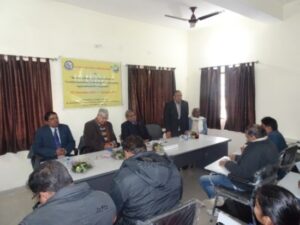 | 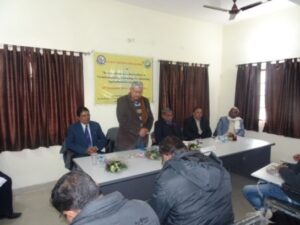 |
| Name | Designation | Contact No. | E-mail Id |
|---|---|---|---|
| Dr. Mukesh Kumar | Professor & Head | 6287797192 | mukeshkumar@rpcau.ac.in |
| Dr. Ranjan Laik | Professor & Director Student’s Welfare | 9934607124 / 8825132402 | rlaik2016@gmail.com |
| Dr. Brijesh Shahi | Professor | 9431426348 | brajesh@rpcau.ac.in |
| Dr. Mukesh Kumar | Professor | 9431897517 | mukeshkumar@rpcau.ac.in |
| Dr. Sanjay Tiwari | Associate Professor | 8051617450 / 7909021232 | sanjaytiwari@rpcau.ac.in |
| Dr. Ashok Kumar Singh | Assistant Professor | 9934916951 | ashoksingh.soils@rpcau.ac.in |
| Dr. Santosh Kumar Singh | Assistant Professor | 9431807104 | santosh.soils@rpcau.ac.in |
| Dr. Vipin Kumar | Assistant Professor | 7903497101 / 9431841476 | vipin@rpcau.ac.in |
| Dr. Shiva Nath Suman | Assistant Professor | 7004345720 / 9471997807 | snsuman@rpcau.ac.in |
| Dr. Shankar Jha | Assistant Professor | 9430259387 | shankarjha@rpcau.ac.in |
| Dr. Shiveshwar Pratap Singh | Assistant Professor | 9801781819 | spsingh.soils@rpcau.ac.in |
Disease Management
- Use moderately resistant varieties e.g. IR36, Rajendra Bhagwati, Dhanlaxmi, Prabhat, Rajshree
- Seed treatment with Carbendazim 50 WP@2g/kg
- Spray Mancozeb @2.5g/Lit or Hexacanazole @ 2 ml/Lit just after appearance of initial symptom.
- Apply balanced doses of NPK fertilizers.
- Seed treatment with Carbendazim 50 WP@2g/kg of seed.
- Spraying of Carbendazim @ 1 gm/Lit or Mancozeb @ 2 g/Lit at boot leaf stage and 15 days later.
- Adopt optimum spacing, avoid excess nitrogen.
- Grow moderately resistant varieties like Ajaya, IR64, Saket-4, Rajshree, Prabhat, Rajendra Bhagwati etc.
- Spraying of mixture of Agrimycin 100 and Blitox-50/Fytolan can significantly reduce the disease in field.
- 60-80 kg N/ha with required potassium may be recommended in endemic areas.
- Use tolerant varieties viz; Shaktiman-1,2,3 & 4, Suwan, Ganga Safed -2, Deccan, Ganga-4, Ganga-5,Kisan and Jawahar.
- Seed treatment with Captan or Thiram @ 2.5gm/ kg seed.
- Spray Dithane Z-78 @ 2.5 kg/ ha in 1000-1200 liters of water, as soon as first symptoms of disease appear in the field.
- Treat seed with Bavistin + Thiram (1:2) or Carboxin + Thiram (1:2) @ 3.0 g/kg seed.
- Grow improved varieties- G-114, Awardhi, Gaurav, Udai.
Raising of papaya seedlings under Nylon net (40-60 mesh) and spraying of Acephate 1.5g per litre, 3 days before planting+ spraying of Urea @ 10g/liter + Zinc sulphate @1.5g + Boron @ 1.0g per litre before flower initiation stage was found to significantly suppress the incidence of PRSV at the early stage of plant growth. The treatment was found to have significant effect on increasing fruit yield (50.8Kg/plant) as compared to untreated control (27.0kg/plant).
- Sanitation of Bareja
- Drenching of Bordeaux Mixture (1%) after onset of Monsoon followed by soil application of bio-agent –Trichoderma viride incubated in MOC(5kg TV/500kg/.ha) and one more drenching of Bordeaux Mixture (1%) after 60 days of 1st drenching
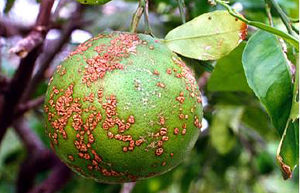 The most effective treatment for management of citrus canker was combined application of Copper oxychloride (CoC) @ 3g per litre+ Streptocycline @ 0.3 g per litre which showed least lesion/leaf i.e.8.20 lesion/leaf. This was followed by spraying of Copper oxychloride (CoC)@3g per litre showing 15.75 lesions per leaf which was statistically at par with treatment of 2% Neem seed kernel extract as spray which exhibited 18.75 lesions per leaf.
The most effective treatment for management of citrus canker was combined application of Copper oxychloride (CoC) @ 3g per litre+ Streptocycline @ 0.3 g per litre which showed least lesion/leaf i.e.8.20 lesion/leaf. This was followed by spraying of Copper oxychloride (CoC)@3g per litre showing 15.75 lesions per leaf which was statistically at par with treatment of 2% Neem seed kernel extract as spray which exhibited 18.75 lesions per leaf.
The treatment involving disease-free suckers from a disease-free field + dipping in carbendazim (0.2%) for 45 minutes followed by carbendazim drenching (0.2%) and carbendazim injection @ 3 ml of 2% solution during the 3rd, 5th and 7th month after planting (MAP) was found to be effective (wilt incidence of 6% as against 80.33% in control) in reducing wilt incidence.However, bio-control agents i.e. Trichoderma viride (@ 10g/sucker three times) used as soil application also found highly effective and causes marked suppression of Panama wilt so may be included in integrated crop management (ICM)/ integrated diseases management (IDM) schedule in strict organic system.
- Seed treatment with Pseudomonas talc formulation @ 0.40% followed by its foliar spray @40% at 45, 60 & 75 day after sowing can be recommended to manage stem gall disease of coriander caused by Protomyces macrospours.
- Alternatively, seed treatment with Hexaconazole @0.20% followed by its foliar spray @0.20% at 45, 60 & 75 day after sowing can be recommended to manage stem gall disease of coriander caused by Protomyces macrosporus.
